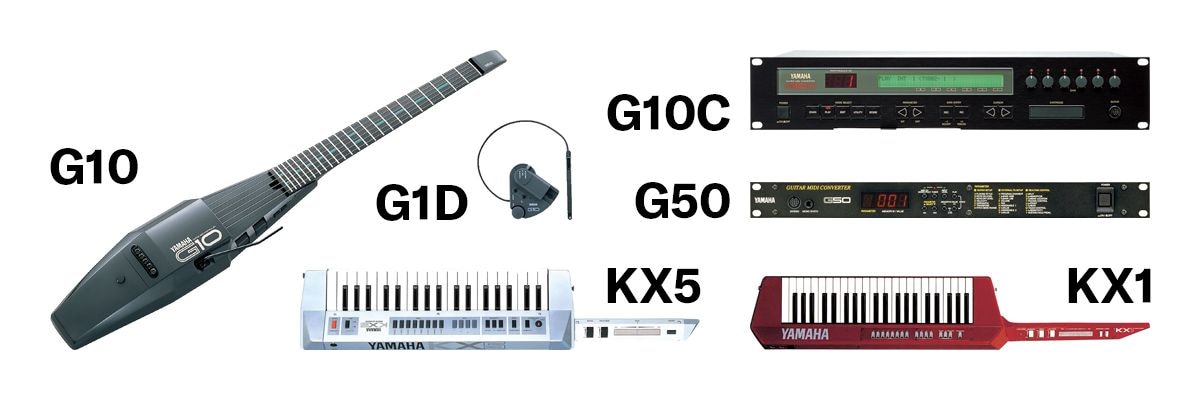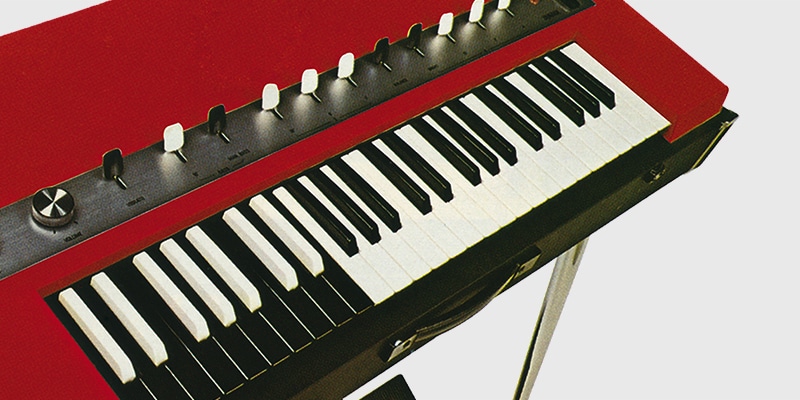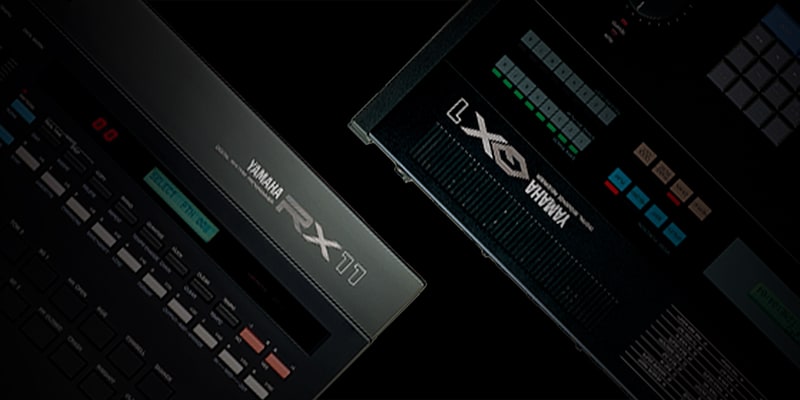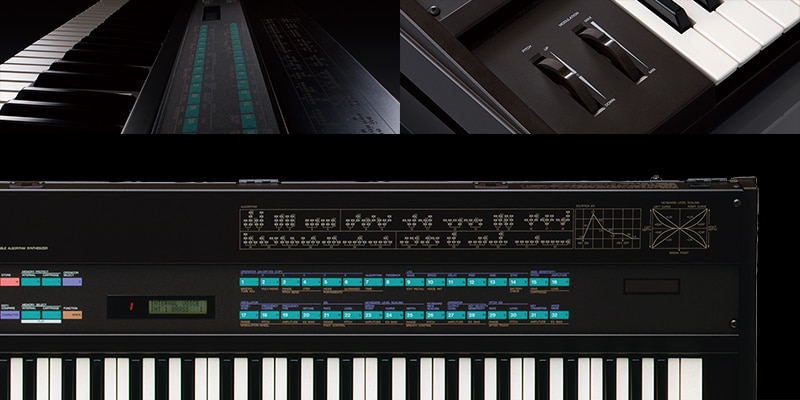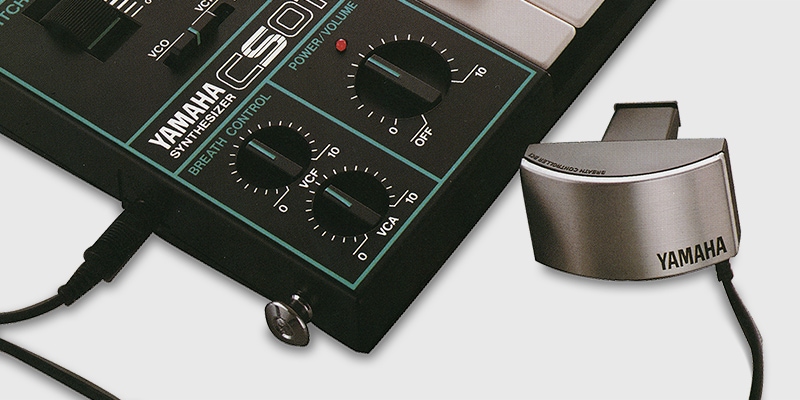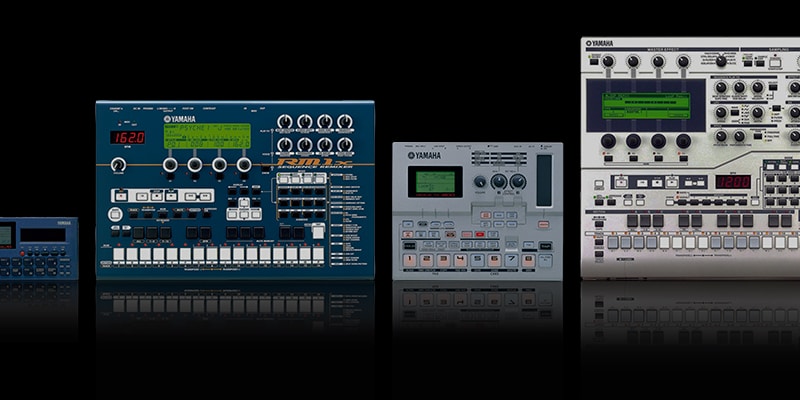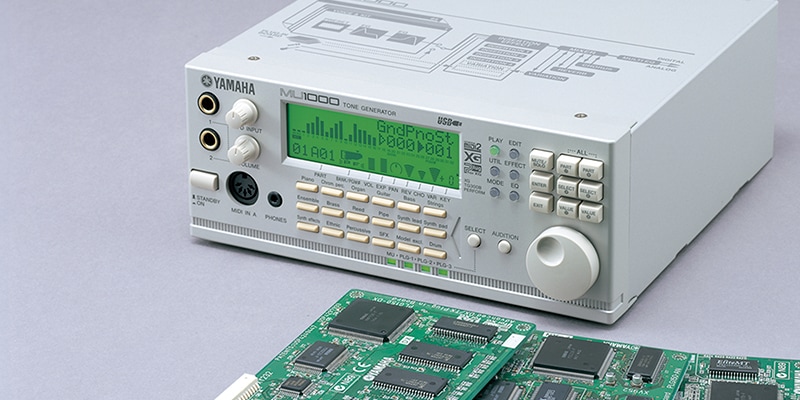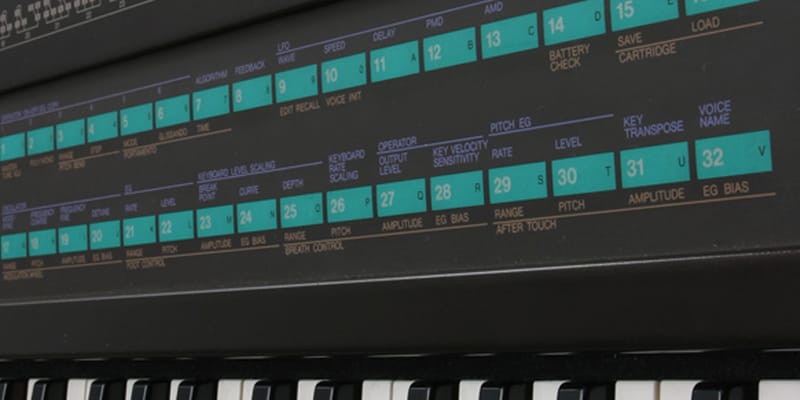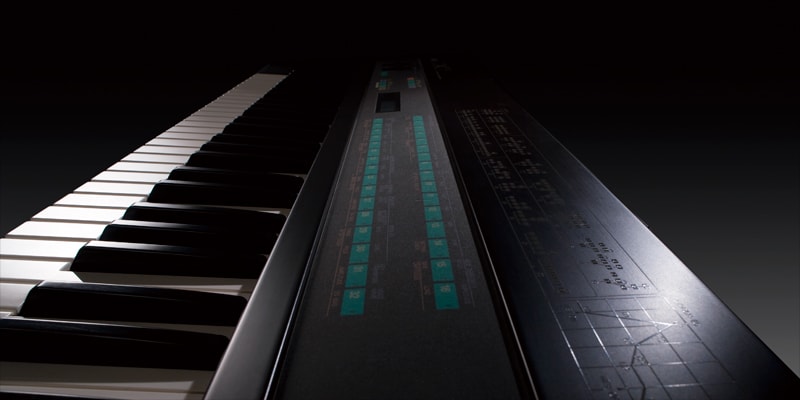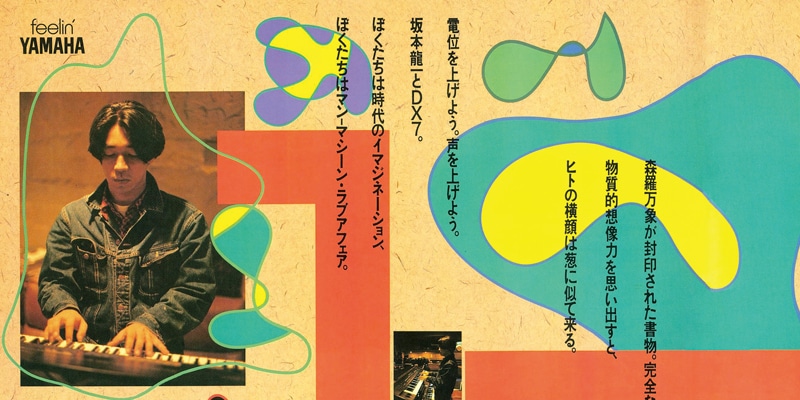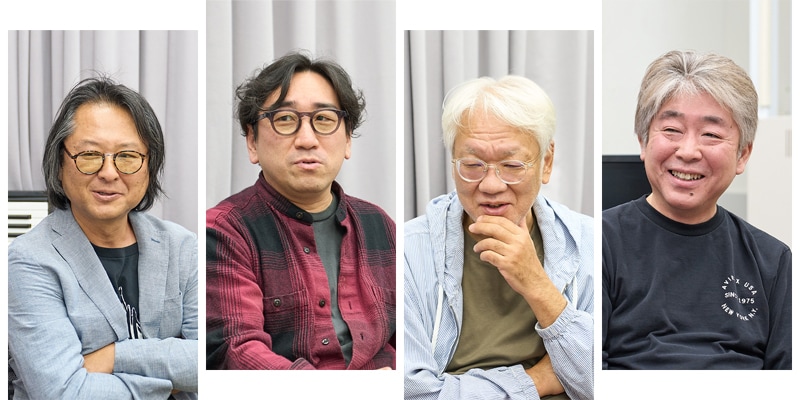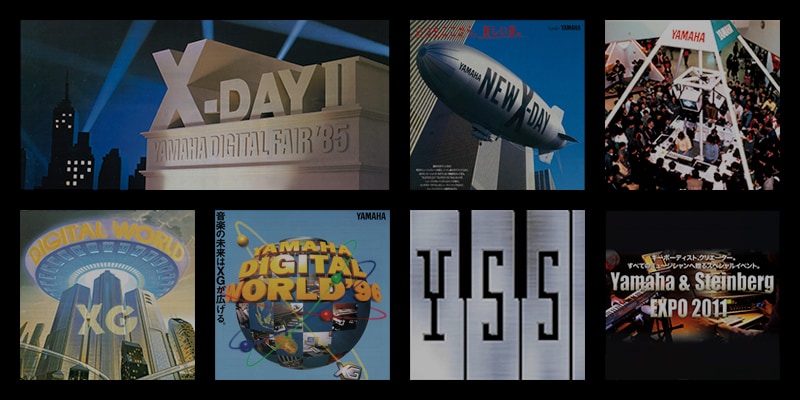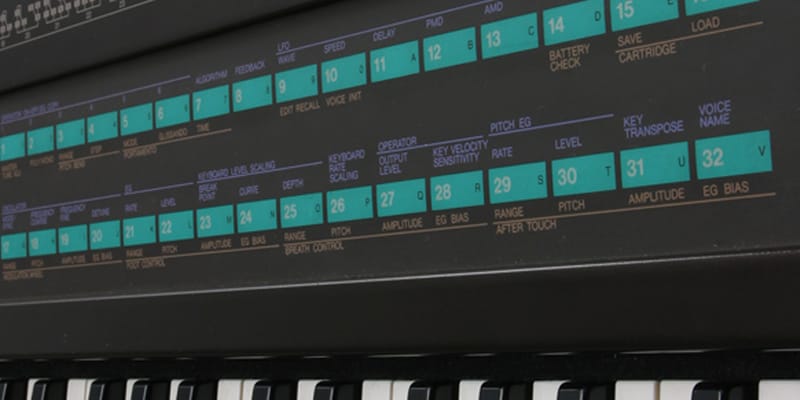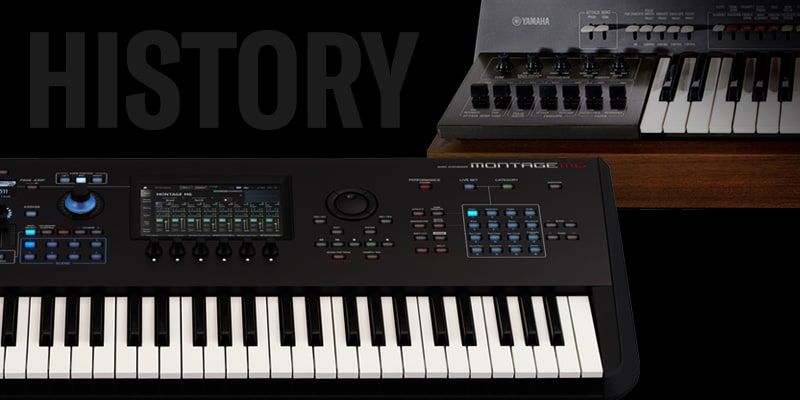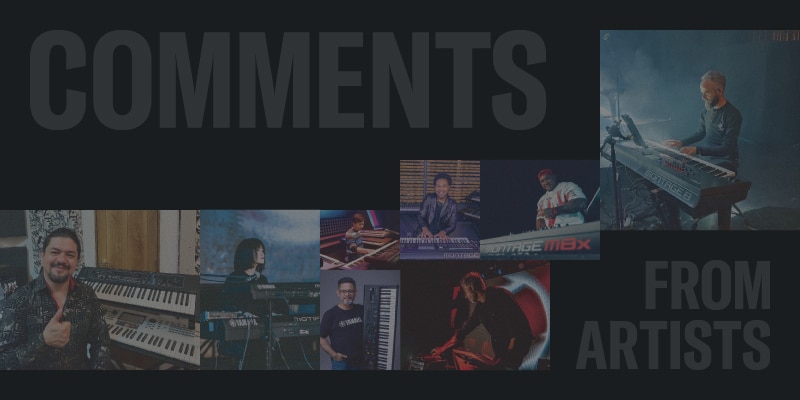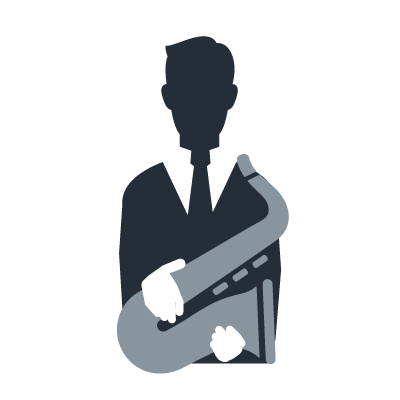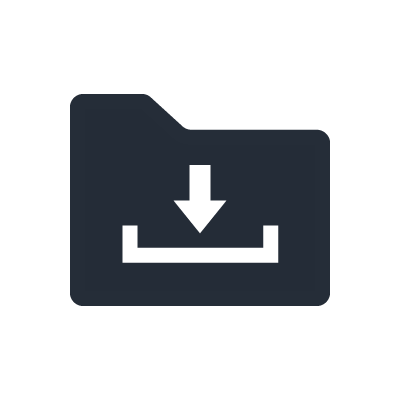Synthesizers and Controllers
Synthesizers are generally equipped with a keyboard which is used to input notes and the strengths with which they are played. However, sounds can be modulated in a wide range of other ways—pitch bend, vibrato, and changes in tone being notable examples—and devices are needed to make these types of control possible. The keyboard’s velocity and aftertouch functions can be used for this purpose, but here we will focus on external controllers—that is, devices that do not form part of the keyboard.
The most popular external controllers are undoubtedly foot pedals, which can be broadly categorized into foot switches and expression pedals. The foot switch is similar to the sustain pedal of a piano and is used to control a function known as sustain or hold. In this product category, the popular Yamaha FC4 and FC5 have been available for more than three decades, while our FC3, which was released later, supports half-pedaling similar to partial application of a piano’s sustain pedal.
Turning to expression pedals, the Yamaha FC7 has long been a favorite of musicians. This particular pedal connects to the Foot Controller jack of a synthesizer using a stereo phone plug, but its sister model—the FC9—also functioned as a volume pedal into which the synth’s stereo (line) output could be directly input. In reality, however, it was not often used for this purpose, so the FC9 was discontinued in favor of the FC7.
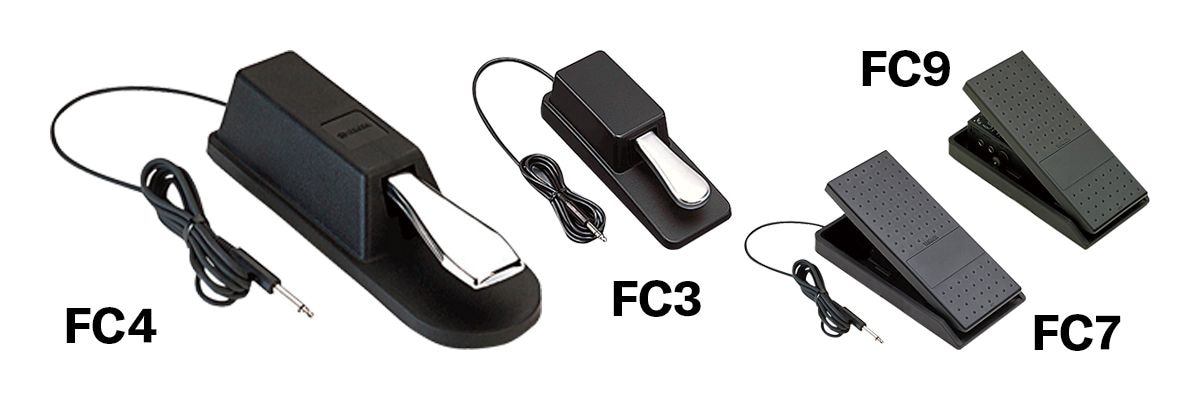
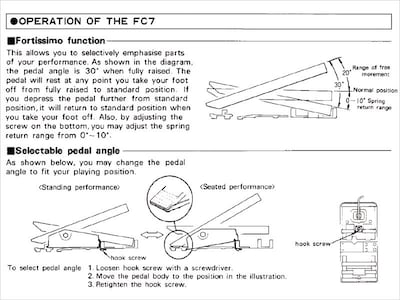
In addition to standard operation, the FC7 expression pedal also supports two unique Yamaha functions. The first is referred to as “fortissimo," and using this function, the pedal can be automatically returned to the standard position—a position set with a spring that can be adjusted up to a maximum of 10° using a screw in the base. The pedal can be set to any point between the fully raised position and the standard position shown in the diagram, and it will usually remain in this position until moved. If, however, the pedal is operated to within the spring return range, it will automatically return to the standard position when released. Using this extremely useful function, you can apply a basic volume or filter setting (corresponding to the standard position) for the majority of your performance, but where necessary, produce stronger (fortissimo) sounds for added expression. The other unique function makes it possible to change the tilt of the pedal, which is important because the angle of the foot differs depending on whether you are playing standing up or sitting down. In typical Yamaha fashion, this overall design takes much of the knowhow perfected for the Electone and reapplies it in a single pedal.
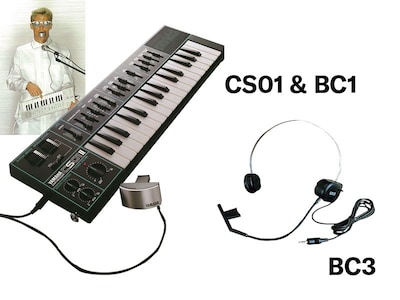
We could not discuss controllers without mentioning the breath controllers used with virtual acoustic (VA) tone generators such as the VL1 and VP1. A breath controller is a device that detects how hard you blow onto it, and in response, modulates the volume or filter setting in the same way as, for example, an FC7 pedal. Yamaha released its first breath controller in the early eighties with the BC1, which came with the CS01 synth as a recommended accessory. It became very popular all over the world for the way in which it allowed keyboard instruments to be played like wind instruments. We later released the headset-type BC2, which freed up both of the musician’s hands. With the arrival of the VL1 and the VP1, however, the breath controller was required to detect extremely delicate nuances in breath control much more frequently, and we created the BC3, with its greatly increased sensitivity, to answer this need. While our current product line does not feature a breath controller, it is not hard to see how this remarkable device became the third most important form of control after keyboard (hand) and pedal (foot).
In the preceding paragraphs, we have looked at devices for controlling the synthesizer as a keyboard-type instrument, but an array of other controllers can be used instead of the keyboard to specify the pitches to be played—a perfect example being our WX series of wind MIDI controllers. Effectively a breath controller fitted with keys similar to those of a wind instrument, this type of device lets you specify notes using the same fingering techniques as, for example, the saxophone or recorder. Also allowing you to reproduce the delicate nuances of the acoustic instrument, these controllers are frequently used by saxophonists and other players of wind instruments. The WX Series also has a long and proud history, with the first model—the WX7—having gone on sale back in 1987. We released the WX11 one year after that, followed a decade later in 1998 by the WX5.
Another highly popular type of controller is the ubiquitously shaped guitar synth. With the Yamaha G10 and G10C guitar controllers, however, we took a slightly different approach from the other instrument makers. Notable for their striking futuristic designs, these controllers are equipped with six of the third strings of an electric guitar, and detect pitch based on the vibration of these strings at the high frequency of 500 KHz.
Despite the groundbreaking nature of the technology applied in developing these controllers, they felt slightly different from real guitars when played because all of the strings were made from the same material. For this reason, guitarists preferred to keep performing on their own instruments, and the G10 and G10C failed to capture their imagination. In the subsequent G50, we switched over to the pickup-and-converter type controllers that can be attached to conventional guitars. Although also no longer part of the Yamaha lineup, the guitar-type controller has certainly played an important role in introducing guitarists to the exciting sounds of the synthesizer.
